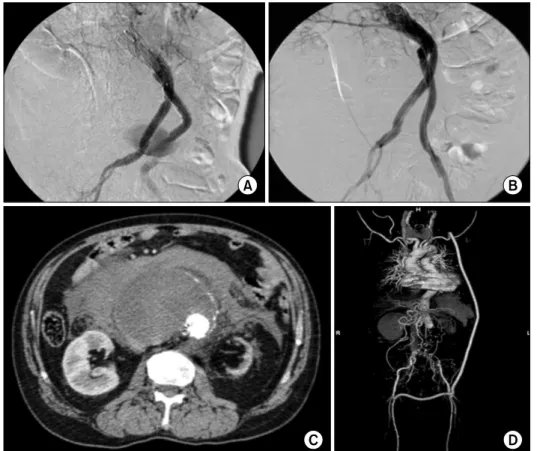Korean J Thorac Cardiovasc Surg 2011;44:68-71 □ Case Report □ DOI:10.5090/kjtcs.2011.44.1.68 ISSN: 2233-601X (Print) ISSN: 2093-6516 (Online)
− 68 −
*Department of Thoracic and Cardiovascular Surgery, School of Medicine, Pusan National University
**Department of Radiology, School of Medicine, Pusan National University
†This work was supported for two years by Pusan National University Research Grant.
Received: August 4, 2010, Revised: September 15, 2010, Accepted: September 26, 2010
Corresponding author: Sung Woon Chung, Department of Thoracic and Cardiovascular Surgery, School of Medicine, Pusan National University, 10, 1-ga, Ami-dong, Seo-gu, Busan 602-739, Korea
(Tel) 82-51-240-7263 (Fax) 82-51-243-9389 (E-mail) chungsungwoon@hanmail.net
C
The Korean Society for Thoracic and Cardiovascular Surgery. 2011. All right reserved.
CC
